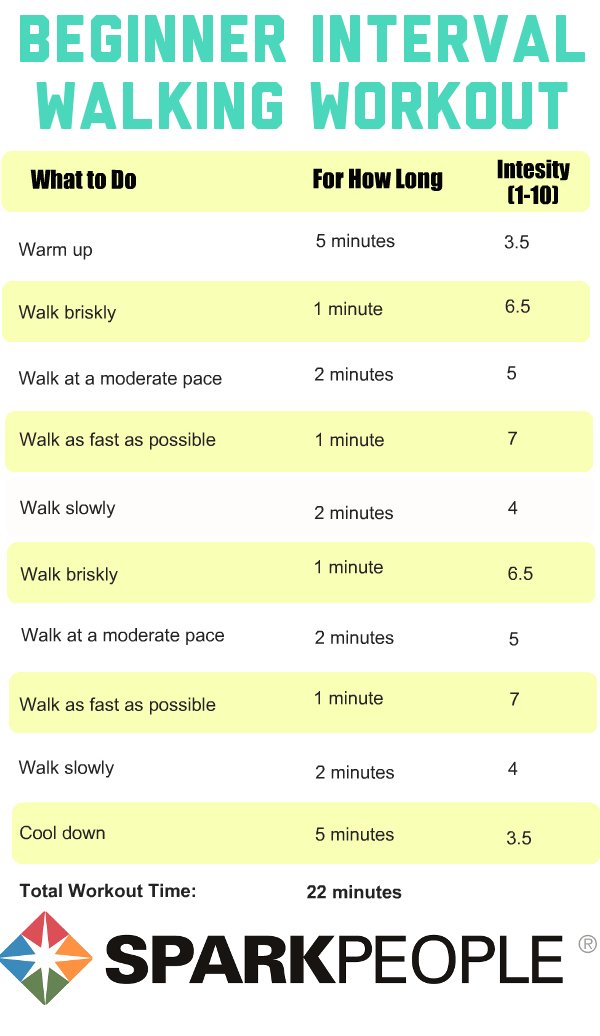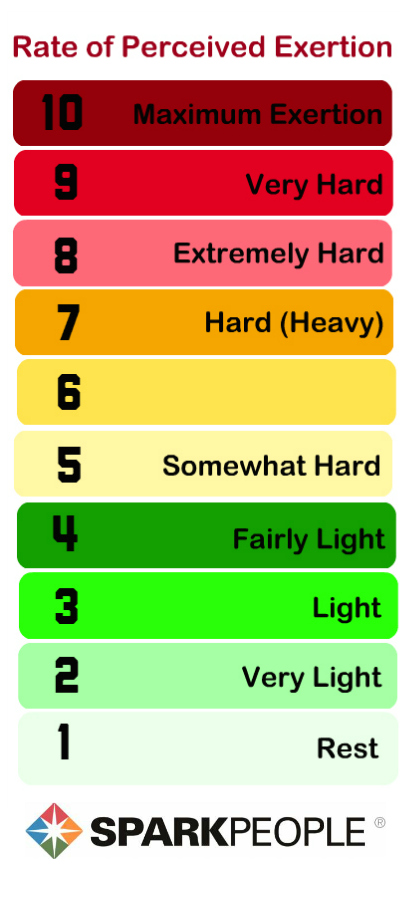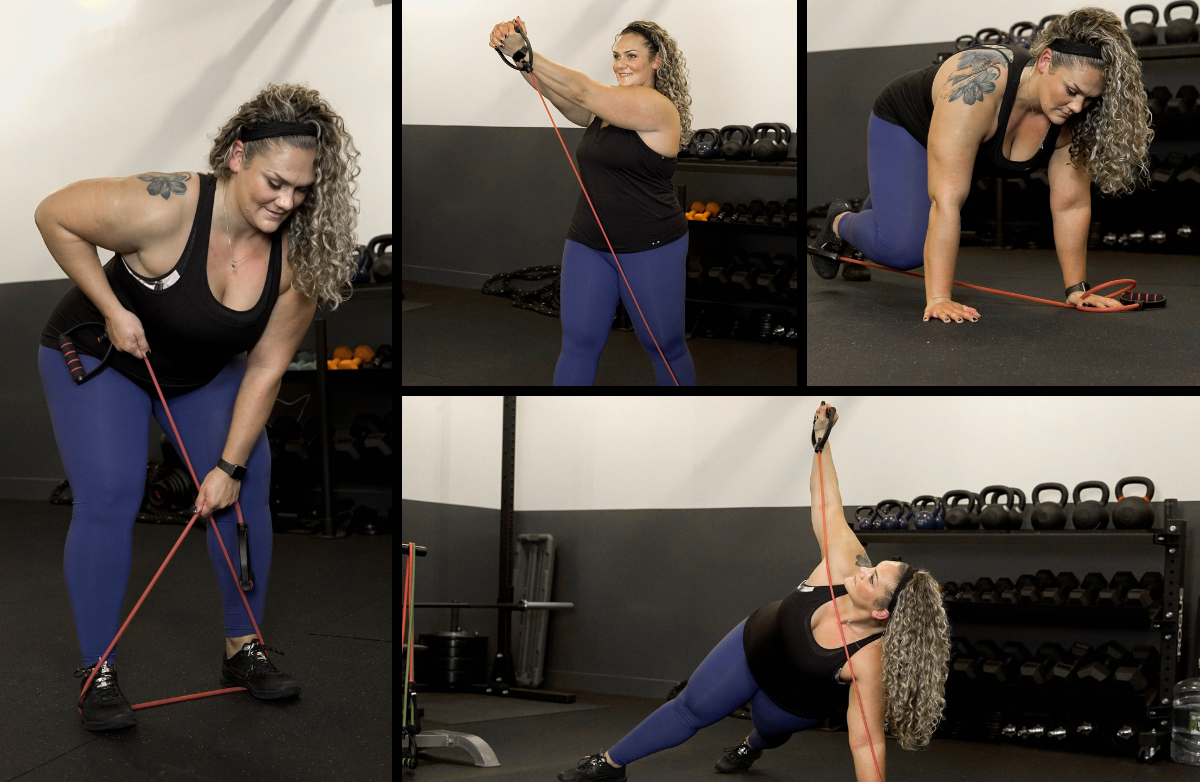Getting Started
Use the FIT (Frequency, Intensity and Time) Principles for a safe and effective workout!
- Frequency: Try the walking workout listed three to five times per week, depending on your fitness level. Beginners should do fewer days, while intermediate to advanced walkers can safely do more.
- Intensity: Walk at a brisk—not leisurely—pace. Don’t worry about what your pace really is, but do pay attention to your overall intensity, aiming for five to seven on a scale of one to 10. You’ll find a full explanation of the one to 10 Intensity Scale (known as RPE) below the workouts.
- Time: Try to follow the suggested workout guidelines to the best of your ability, which means that you'll gradually increase your
walk time as you progress from the beginner to the intermediate and advanced interval workouts.
Beginner Interval Walking Workout

Intermediate Interval Walking Workout
.png)
Advanced Interval Walking Workout
.jpg)
An Explanation of Using the RPE Method to Measure Intensity
Rate of Perceived Exertion (RPE) may be the most versatile method to measure exercise intensity for all age groups. Using this method is simple, because all you have to do is estimate how hard you feel like you’re exerting yourself during exercise. RPE is a good measure of intensity because it is individualized—it’s based on your current fitness level and overall perception of exercise. The scale ranges from 1 to 10, allowing you to rate how you feel physically and mentally at a given intensity level.

An RPE between five and seven is recommended for most adults. This means that at the height of your workout, you should feel you are working "somewhat hard" to "hard."







.png)
.jpg)

.jpg)

.jpg)
